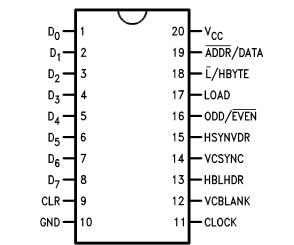ACT715: Features: · Maximum Input Clock Frequency > 130 MHz· Interlaced and non-interlaced formats available· Separate or composite horizontal and vertical Sync and Blank signals available· Complete cont...
floor Price/Ceiling Price
- Part Number:
- ACT715
- Supply Ability:
- 5000
Price Break
- Qty
- 1~5000
- Unit Price
- Negotiable
- Processing time
- 15 Days
SeekIC Buyer Protection PLUS - newly updated for 2013!
- Escrow Protection.
- Guaranteed refunds.
- Secure payments.
- Learn more >>
Month Sales
268 Transactions
Payment Methods
All payment methods are secure and covered by SeekIC Buyer Protection PLUS.

 ACT715 Data Sheet
ACT715 Data Sheet







